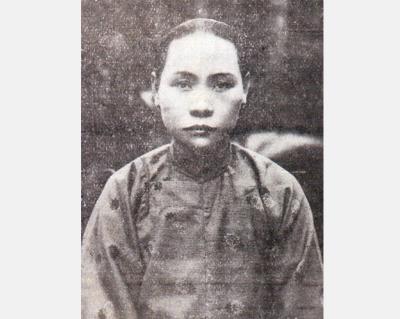Gregory Schopen is a remarkable phenomenon by any standard. First, he's a specialist in a very restricted field, the academic world of Indian Buddhist studies. He writes books, such as this new one, on the remote topic of monasticism in India during what the Christian West calls the first millennium. Second, he's that field's dominating personality, and has seemingly lifted it out of an ethos characterized by disputes in obscure periodicals over archaeological sites and ancient rule-books into the light of a humane and resplendent day. But thirdly, and in many ways most importantly, he's an example of that exceptionally rare species -- an academic who writes not only lucidly but also eloquently, charmingly, and very often wittily.
There are no longer significant numbers of Buddhists in India. The faith at some point moved outwards as if by centrifugal force from its place of origin to Sri Lanka, Tibet, Japan, Korea and the pan-Chinese world. But at one time there were Buddhist monasteries all over the sub-continent, and these, together with those in what is now Sri Lanka, are the subject of Professor Schopen's enquiring gaze.
If Schopen is a big fish in a rather small pond, this doesn't prevent him dominating it with the style of a generous-hearted pontiff. He may of necessity deal with such things as broken walls, coins, re-used pots and stray inscriptions, but he surveys his field with nothing less than a full-throated ease.
The popular image of the Buddhist monk, he writes, is of a "lone ascetic who has renounced all social ties and property to wander or live in the forest, preoccupied with meditation and the heroic quest for ... enlightenment." As the title of this book shows, however, there was much else to be considered, and it's this business side of Indian monastic life that comes under scrutiny, along with matters such as death ("a lively issue"), nuns, the measurement of time, and parallels with the world of medieval Christian monasticism -- Ireland is the most westerly point that gets a mention.
Among the things that Schopen is at pains to point out are that Buddhist monks of the period continued to hold their own private property, that their institutions maintained important contacts with the rich donors to whom they owed so much, and the monastic life in general was ordered in ways that took a careful account of money.
As for Schopen's pervasive sense of humor, there are many examples to choose from. Right at the start there's a Dedication "to the taxpayers and working men and women of Indiana, Texas and California whose labor paid for my scholarly leisure." Then there are the acknowledgements -- one of a colleague most of whose personal library "is made up of books checked out of the university library for the next two hundred years," another of "the only monk I know who looks really good in a three-piece suit." Skip to the index and you'll find, under "Bull-shit," the following note: "There should, perhaps, be many more entries here."
But Schopen's scholarly pre-eminence and stylish sense of humor are related. He has a stylist's lightness of touch and an ever-present wit precisely because he is so eminent. After all, he has worked so hard on what was presumably at first recalcitrant and humorless material (though he does claim to see a certain droll humor in monastic regulations). His style is clear because he's such a complete master of his subject, in the same way that the style of the jargon-purveyors who dominate the humanities departments of so many universities is convoluted and inaccessible precisely because they are not masters of their subjects, and are hiding behind a briefly-fashionable terminology in order to conceal their own lack of true learning.
Schopen is a professor at the University of California, Los Angeles, and also does much work in Austin, Texas. Both places are lucky to have him. He's a major scholar because he masters the smallest details of his sources, then stands back and imagines the big picture. By asking good questions he comes up with interesting answers. The sunny serenity that characterizes Schopen's work shouldn't disguise his originality. He's described by his peers as having revolutionized the study of Indian Buddhism, and although it isn't possible for a general reviewer to confirm this, his standing is clearly very high.
There's a welcome touch of an older school of academic about him as well, something of the now legendary JRR Tolkien when he was professor of nordic philology at Oxford, and of other scholars turned imaginative writers such as Robert Graves. Maybe Schopen, too, will take to writing fiction one day -- he clearly reads such books as he comments that the traditional view of the Buddhist monk quoted above has "found its way even into modern European novels."
But it's his urbanity and wit that stay with you. You can easily imagine his colleagues doubling up with laughter as the celebrated scholar once again knocks over the academic proprieties -- at the moment, for instance, when he breezily ends the final chapter, originally published as an article in a learned journal, as follows [Professor Bechert is a rival expert in the field]: "Again, our text suggests that for the Indian Mulasarvastivadin tradition the writing down of Buddhist texts was simply not -- unlike Professor Bechert's sixty-fifth birthday -- a major event. We send our congratulations!"

The Lee (李) family migrated to Taiwan in trickles many decades ago. Born in Myanmar, they are ethnically Chinese and their first language is Yunnanese, from China’s Yunnan Province. Today, they run a cozy little restaurant in Taipei’s student stomping ground, near National Taiwan University (NTU), serving up a daily pre-selected menu that pays homage to their blended Yunnan-Burmese heritage, where lemongrass and curry leaves sit beside century egg and pickled woodear mushrooms. Wu Yun (巫雲) is more akin to a family home that has set up tables and chairs and welcomed strangers to cozy up and share a meal

Dec. 8 to Dec. 14 Chang-Lee Te-ho (張李德和) had her father’s words etched into stone as her personal motto: “Even as a woman, you should master at least one art.” She went on to excel in seven — classical poetry, lyrical poetry, calligraphy, painting, music, chess and embroidery — and was also a respected educator, charity organizer and provincial assemblywoman. Among her many monikers was “Poetry Mother” (詩媽). While her father Lee Chao-yuan’s (李昭元) phrasing reflected the social norms of the 1890s, it was relatively progressive for the time. He personally taught Chang-Lee the Chinese classics until she entered public

Last week writer Wei Lingling (魏玲靈) unloaded a remarkably conventional pro-China column in the Wall Street Journal (“From Bush’s Rebuke to Trump’s Whisper: Navigating a Geopolitical Flashpoint,” Dec 2, 2025). Wei alleged that in a phone call, US President Donald Trump advised Japanese Prime Minister Sanae Takaichi not to provoke the People’s Republic of China (PRC) over Taiwan. Wei’s claim was categorically denied by Japanese government sources. Trump’s call to Takaichi, Wei said, was just like the moment in 2003 when former US president George Bush stood next to former Chinese premier Wen Jia-bao (溫家寶) and criticized former president Chen

President William Lai (賴清德) has proposed a NT$1.25 trillion (US$40 billion) special eight-year budget that intends to bolster Taiwan’s national defense, with a “T-Dome” plan to create “an unassailable Taiwan, safeguarded by innovation and technology” as its centerpiece. This is an interesting test for the Chinese Nationalist Party (KMT), and how they handle it will likely provide some answers as to where the party currently stands. Naturally, the Lai administration and his Democratic Progressive Party (DPP) are for it, as are the Americans. The Chinese Communist Party (CCP) is not. The interests and agendas of those three are clear, but